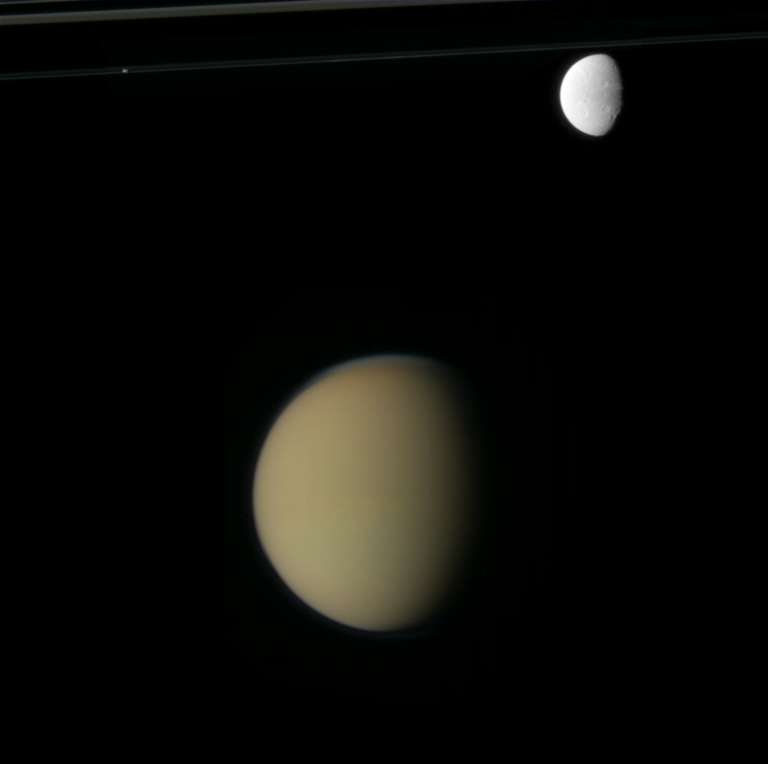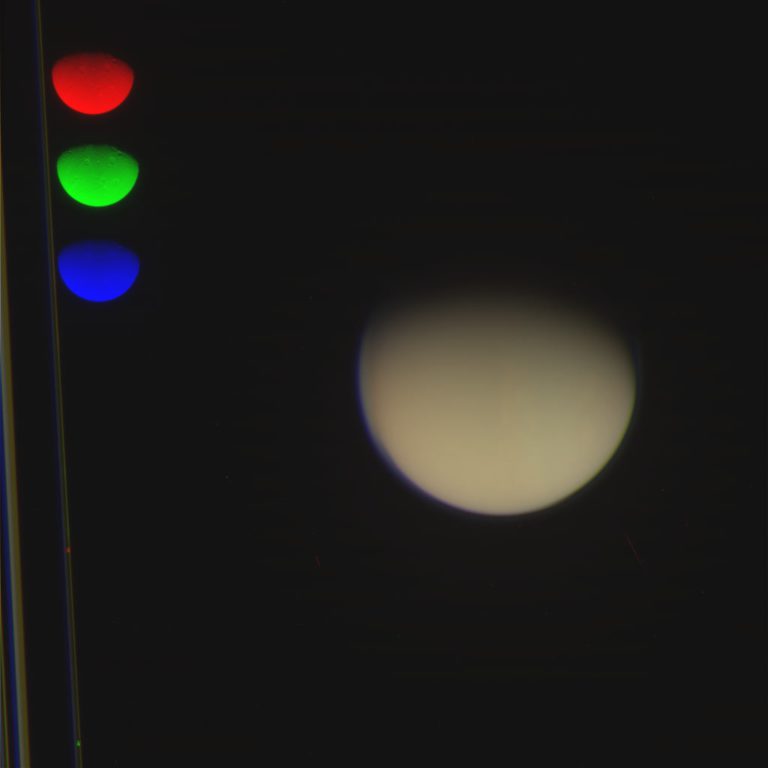Emily Lakdawalla • Oct 29, 2010
Pretty picture: Three moons of Saturn
The Cassini Raw Images Website always offers rewards to the browser. This evening I found the raw images necessary to create this color composite, showing the hazy orange moon Titan, the mid-sized icy moon Dione, and the tiny rock Prometheus all at the same time. (Prometheus may be a little hard to spot, a tiny oblate thing sitting on top of the faint line of the F ring at upper left corner.)

The original images were captured through red, green, and blue filters on October 18, while Titan was more than 2.5 million kilometers away from the Cassini orbiter. Dione was shooting through the field of view rather quickly, and Prometheus even faster; in fact, Prometheus was well gone by the time that the blue-filter image was taken, so I had to fake it with a piece of the green-filter image. Everything in the image had to be aligned slightly differently -- Titan, Dione, Prometheus and its related chunk of F ring, and the tiny sliver of the main rings at upper left corner.
A few posts ago there were a lot of people clamoring to explain why I have to do so much work in Photoshop to make Cassini images pretty, so I'll show you what this set of pictures would look like as a color composite without all the Photoshop work; this is just a straight color combination of the three raw photos, with the red-filter image in the red channel, green-filter image in the green channel, and blue-filter image in the blue channel.

Hopefully most of you agree that the top version of the image is an improvement!
Support our core enterprises
Your support powers our mission to explore worlds, find life, and defend Earth. You make all the difference when you make a gift. Give today!
Donate

 Explore Worlds
Explore Worlds Find Life
Find Life Defend Earth
Defend Earth

